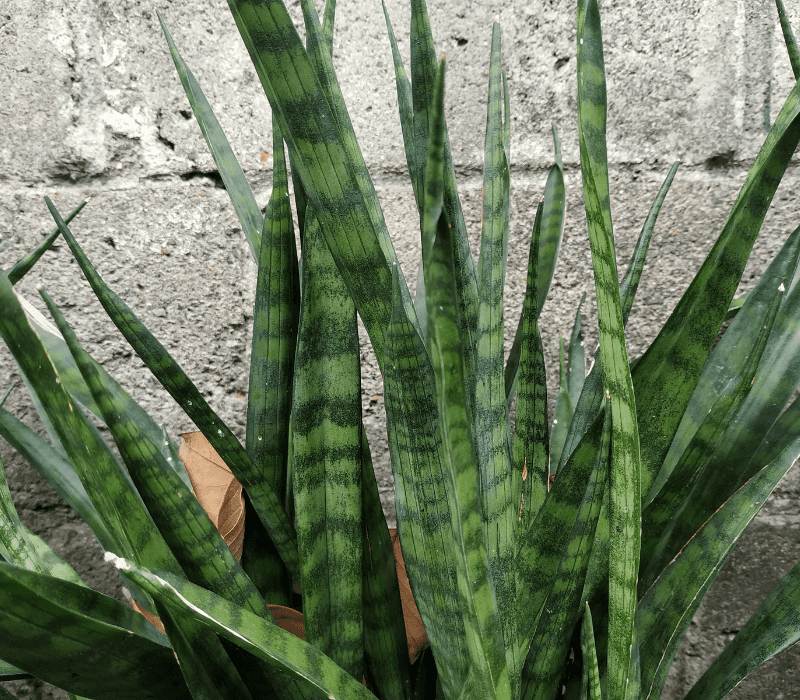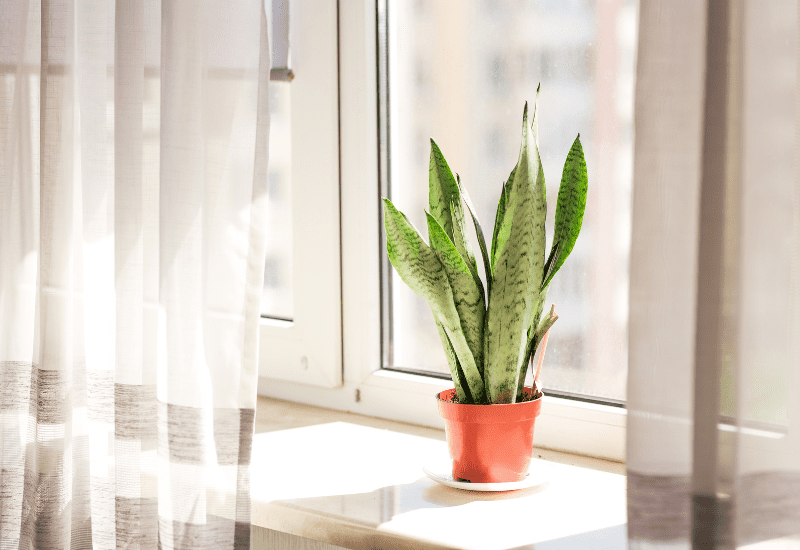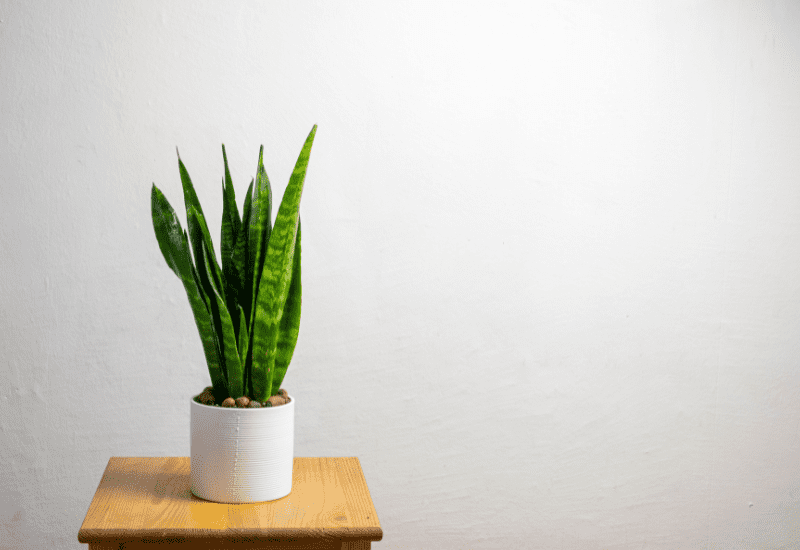Sansevieria Zeylanica is a tough, hardy plant with green sword-like leaves. It naturally grows in drier areas and can make for an interesting addition to homes or offices because of its natural beauty as well as easy maintenance qualities.
Although this tough plant may seem like it should be fairly simple to grow at home, there are still some factors worth considering before you get started.
Sansevieria Zeylanica Care Guide Overview
- How To Plant (when & where)
- How To Grow (staking, watering, fertilizing, humidity, mulching)
- How To Pot And Repot
- How To Propagate (when & how)
- And Pests and Diseases, Plant Species, Toxicity
Characteristics
- Common names: Bowstring hemp
- Origin: Southeast Asian Region, especially found in India and Sri Lanka
- Indoor or Outdoor plant: Both
- Height and Structure: Up to 3 ft. tall and around 1 foot across
- Temperature: between 60°F to 75°F is best
- Flower Color: Light green with dark green patterns on leaves
All About How To Plant

Soil
Sansevieria Zeylanica is a very common type of plant found in dry regions. Being tropical, the roots need to stay dry and not in soggy soil. Such soil would rot the plant or make leaves bend over and turn yellow with mushy cores.
Loose soils that dry fast is essential for these plants as they need moisture but not too much water. The proper soil will allow for plenty of airflow.
Nonetheless, this plant can rest in many different types of soil. However, you will want to keep the soil between the pH levels of 6 to 7.
If you want to create the perfect environment for your new friend, try planting it in a potting mix made just for tropical plants. The same soil for succulents and cacti also do well with the Sansevieria Zeylanica.
If you notice any problems like nematodes or fungal infections near the soil line, then replace the soil as soon as possible. This way you will avoid the stunted growth of your plants.
Light
It’s important to allow a plentiful amount of light when possible as you are growing Sansevieria Zeylanica indoor. A bright window or skylight is perfect, but if your grow space doesn’t have any natural sunlight at all then try using plant lamps. Indirect sunlight works too. However, your plant will be darker in color while raised in low-light settings.
When growing outside, direct sunlight can be acceptable. Though, keep in mind that the intense summer heat and light may result in the plant turning yellow. Also, plants grown outside will be light in color with fainter patterns on leaves.
Pots and Repotting

A pot is not just for show. A good pot will emphasize your plant’s beauty and provide the perfect environment to grow it in. Some popular options are ceramic or plastic pots that can be used indoors.
The most important aspect of a pot is to make sure it can drain easily. Drainage holes are essential to keep the roots healthy. The pot ideally should be appropriate to the size of your Sansevieria Zeylanica. You don’t want a pot too large or small.
Your Sansevieria Zeylanica will need to be repotted around every 2 to 3 years depending on some variables like the size of pot and growth rate. Remember that repotting helps to grow your plant into a sturdier and healthier state.
After buying a new plant, it is sensible to repot it. The plant most likely has already outgrown the store-bought pot or needs fresher soil. For the initial repotting, you don’t always have to get a bigger pot.
Water and Humidity
The Sansevieria Zeylanica flourishes in somewhat humid settings. If growing your plant indoors, try a tray of pebbles filled with water and placed underneath the pot. This little trick will increase the humidity surrounding the plant.
When growing outdoors, try placing moist mulch around the plants. The mulch will provide some needed humidity. Still, there is a balance between increasing humidity and overwatering.
Always water your plant after the soil is dry. Give the plant enough water to drench the soil without overflowing the pot. If watering plants outside, which are in the ground, water slowly and aim to only drench the top 3 inches of the soil.
During winter, you can start to slow down your watering habits. The plant doesn’t grow much during colder months. Therefore, your Sansevieria Zeylanica will not need many nutrients. However, keep watering consistent during the summer or warm months. This is the time your plant will be growing the most.
Temperature
The plant is happiest anywhere between the temperatures of 60-75°F. Ideally, even though the plant is very hardy, keep it safe from extreme cold and heat. For outdoor plants, provide some shelter during the more intense summer days. This way you allow the plant to get sunlight but are still mindful of the heat.
As stated, the plant isn’t very active during the winter months. The cold triggers a response in the plant to go dormant. However, a setting below 50°F will damage the leaves.
If possible, carry your plants indoors during the colder months. Lastly, you can protect the in-ground plants with a heavy sheet. The sheet will ward off frost and keep some warmth near the plant.
Fertilizer
This particular plant can thrive with minimum extra feeding. In fact, the Sansevieria Zeylanica can become sick when given too much fertilizer. When fertilizing, do so during the warmer months when the plant is active and growing steadily. Adding a medium-strength fertilizer will be plenty.
Liquid or slow-release fertilizers are good selections. Organic fertilizers are great too but use them carefully.
Avoid fertilizing saplings. Small plants need time to get used to their new environment before requiring extra food. Also, it is a good idea to wait at least 1 month after repotting before adding fertilizer.
Pests and Diseases
Luckily, your Sansevieria Zeylanica will not have to deal with a lot of diverse pests and diseases. On occasion, they may be swarmed by mites or mealybugs. These two are the most common pests for your plant. Insecticide or alcohol is useful to get rid of these bugs. Pests can be discouraged also by keeping the leaves clean.
On the other hand, root rot or fungal diseases can happen if the soil is too wet. Try some fungicide for fungal contaminations. Since this plant is so hardy, it’ll over time become stronger when fighting diseases and pests.
Size and Growth
The Sansevieria Zeylanica can grow up to 3 feet tall. This is a stilted and upright leafy herb. The leaves are usually stiff with pointy edges which don’t spread out much.
Propagation

When it comes to propagation, planting rhizomes, dividing the root-ball, or using leaf cuttings are dependable procedures to create duplicate plants. When the plant is old enough, use a sharp and disinfected knife to divide the root-ball or retrieve leaf cuttings. After done, you will want to repot your trimmings in separate pots. Lastly, water your clippings carefully.
Pruning
Generally, you won’t have to do much when it comes to pruning. If the leaves droop, cut them with sterilized shears. Typically, around two leaves will droop as your plant grows. If the leaves are healthy use them for cuttings.
Furthermore, the only clipping needed is for dead or injured leaves. If the damage is minor, you could simply trim the leaves. However, if the whole leaf is dying then you will need to prune the whole thing.
Plant Species
The Sansevieria Zeylanica is a perennial that also looks quite similar to its cousin, the more common and well-known Sanseviera Trifasciata (snake plant). The Sansevieria Zeylanica plant has been mistaken for being identical in looks and appearance when compared to its close cousin.
Great Houseplant Pairing
- Bird of Paradise
- Variegated Ivy
- Mandevilla Plant
- Calibrachoa
- Marigolds
- Fittonia
- Succulents
Is the Sansevieria Zeylanica Toixic?
Sansevieria plants are usually harmless to touch, but they can be toxic if eaten. Pets, like dogs or cats, should avoid the plant. Humans aren’t immune either. Therefore, keep an eye on your kids while they are around these types of plants or risk their health.
A chemical inside the plant juice called saponin causes the most issues. When ingested the saponin in these types of plants will cause mouth irritation or stomach issues like vomiting, diarrhea, nausea, etc.


